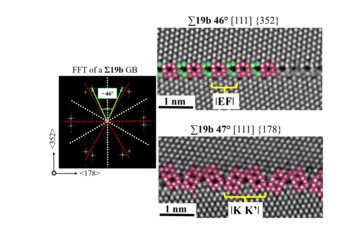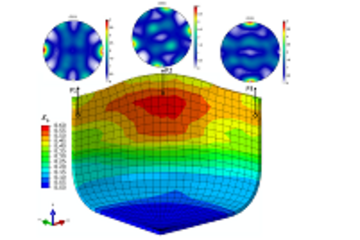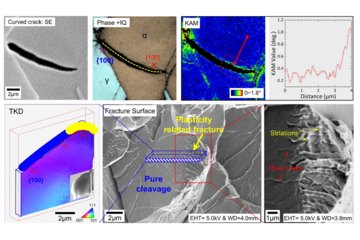All genres
521.
Thesis - PhD
Correlation of microstructures and thermal conductivity of the thermoelectric material Ag16.7Sb30Te53.3. Dissertation, Ruhr-Universität Bochum (2019)
522.
Thesis - PhD
Characterization of aerosols and nanoparticles released during various indoor and outdoor human activities. Dissertation, RWTH Aachen University (2018)
523.
Thesis - PhD
Synthesis and in-depth electron microscopic characterization of solvothermally grown copper indium sulfide thin films. Dissertation, RWTH Aachen, Aachen, Germany (2018)
524.
Thesis - PhD
Solid state dewetting phenomena of aluminum thin films on single crystalline sapphire. Dissertation, RWTH Aachen University (2017)
525.
Thesis - PhD
The Influence of Post-Growth Heat Treatments and Etching on the Nanostructure and Properties of Rutile TiO2 Nanowires. Dissertation, RWTH Aachen, Aachen, Germany (2017)
526.
Thesis - PhD
Investigation of Sputtered Mo2BC Hard Coatings: Correlation of Nanostructure and Mechanical Properties. Dissertation, RWTH Aachen, Aachen, Germany (2017)
527.
Thesis - PhD
Investigation of alternative catalyst and support materials and their effect on degradation in high-temperature polymer-electrolyte-membrane fuel cells. Dissertation, RWTH Aachen University, Aachen, Germany (2017)
528.
Thesis - PhD
On the design of alloys and synthesis for composite steels. Dissertation, RWTH Aachen, Aachen, Germany (2017)
529.
Thesis - PhD
Fundamentals of ferrous low-carbon lath martensite: from the as-quenched, to tempered and deformed states. Dissertation, RWTH Aachen, Aachen, Germany (2017)
530.
Thesis - PhD
High Resolution Crystal Plasticity Simulations. Dissertation, Aachen Institute for Advanced Study in Computational Engineering Science (AICES), RWTH Aachen University, Aachen, Germany (2015)
531.
Thesis - Master
Scanning electron microscopy study of the microscale degradation mechanisms in polymer electrolyte fuel cells. Master, Heinrich-Heine-Universität Düsseldorf (2021)
532.
Thesis - Master
Electron microscopy degradation studies of ruthenium-platinum core-shell nanoparticles for polymer electrolyte membrane fuel cells. Master, Universitat Autònoma de Barcelona, Spain (2021)
533.
Thesis - Master
Microstructure, thermal stability and defect phonon scattering in AgSbTe2 thermoelectrics. Master, Universitat Autònoma de Barcelona, Spain (2019)
534.
Thesis - Master
Structure-property relationship studies of Pt/TiO2 nanomaterials for electrochemical applications. Master, Universitat Autònoma de Barcelona, Spain (2019)
535.
Thesis - Master
Cathodoluminescence study of lanthanide-doped oxides. Master, Heinrich-Heine Universität, Düsseldorf, Germany (2018)
536.
Thesis - Master
Synthesis Approaches to Nb3O7(OH) Nanostructures and New Studies on Their Growth Mechanism. Master, Ludwig-Maximilians-Universität, München, Germany (2018)
537.
Thesis - Bachelor
Degradation mechanisms during operation of high temperature polymer electrolyte membrane fuel cells. Bachelor, Universitat Autònoma de Barcelona, Spain (2020)
538.
Thesis - Bachelor
Effect of the processing route on the microstructure of Ag18Sb29Te53 (AST) based thermoelectrics. Bachelor, Universitat Autònoma de Barcelona, Spain (2018)
539.
Other
Preventing Hydrogen Embrittlement: The Role of Barrier Coatings for the Hydrogen Economy, Hydrogen 4 (2 Ed.), pp. 307 - 322 (2023)
540.
Other
Co-organizer of the International Seminar Series on the Microstructure of Materials (on-line). (2021)











